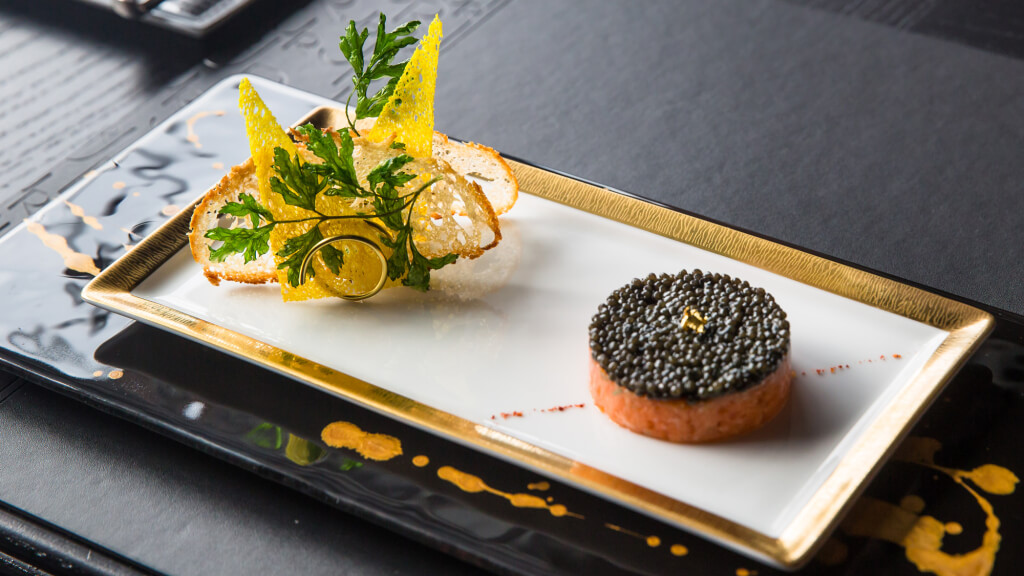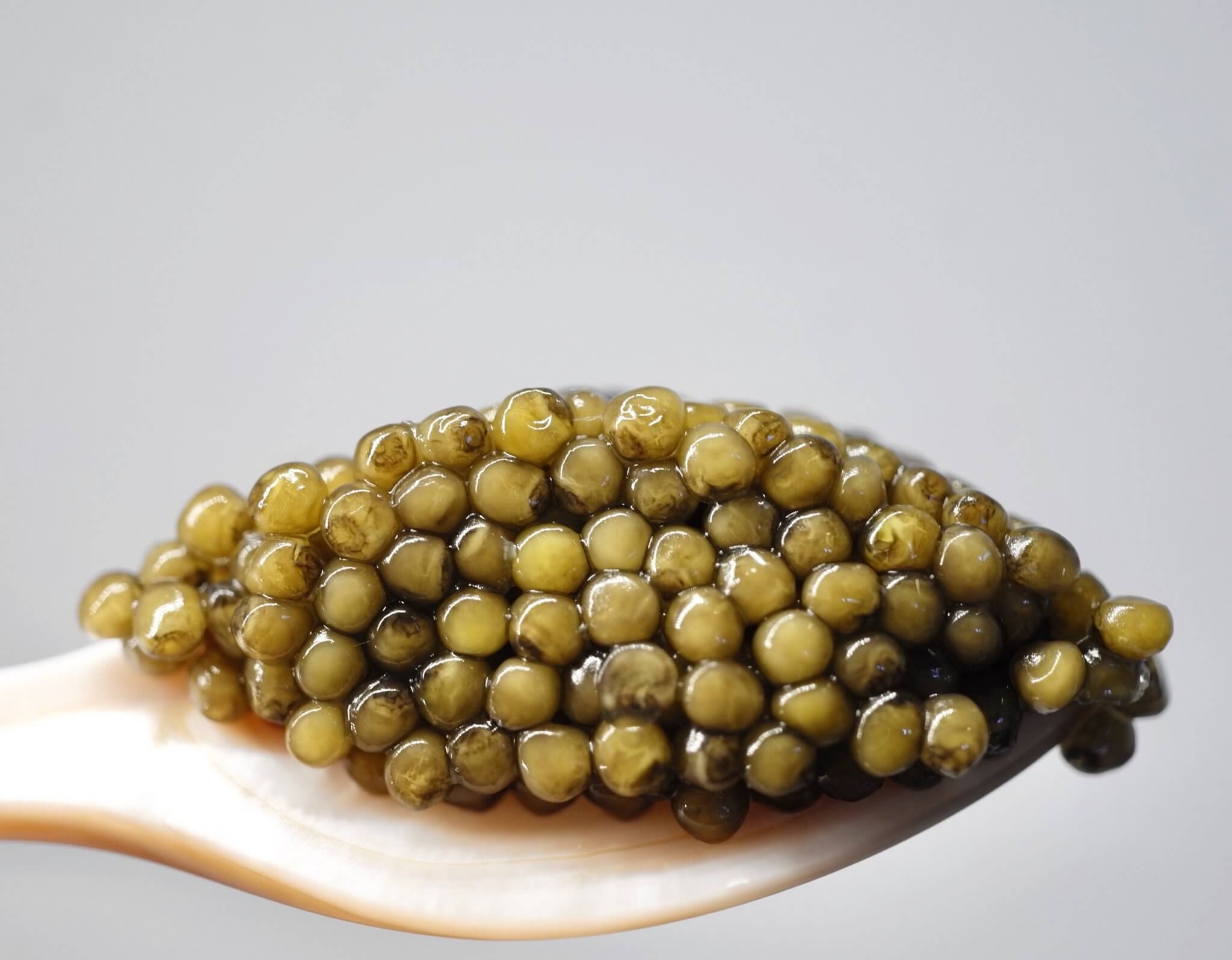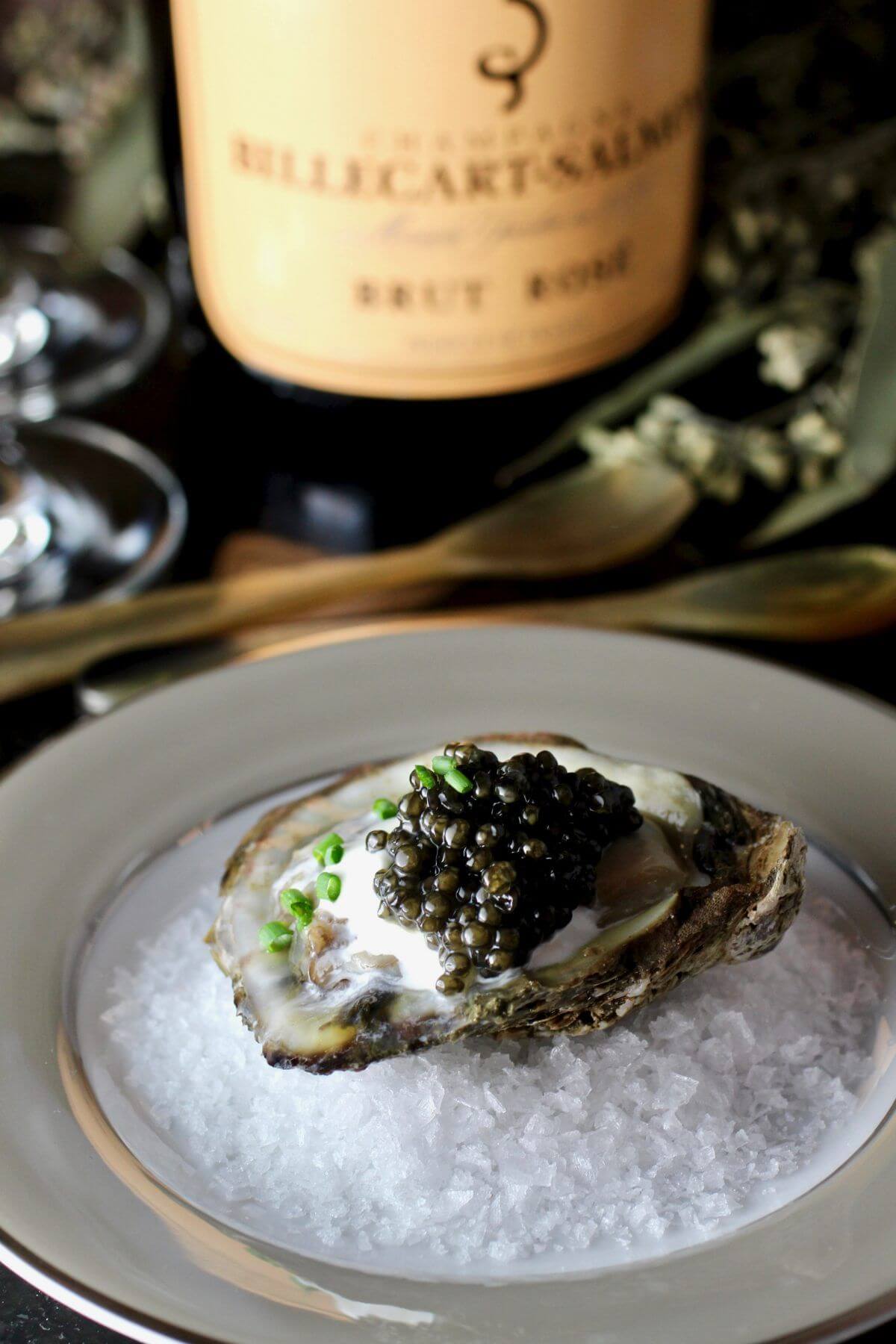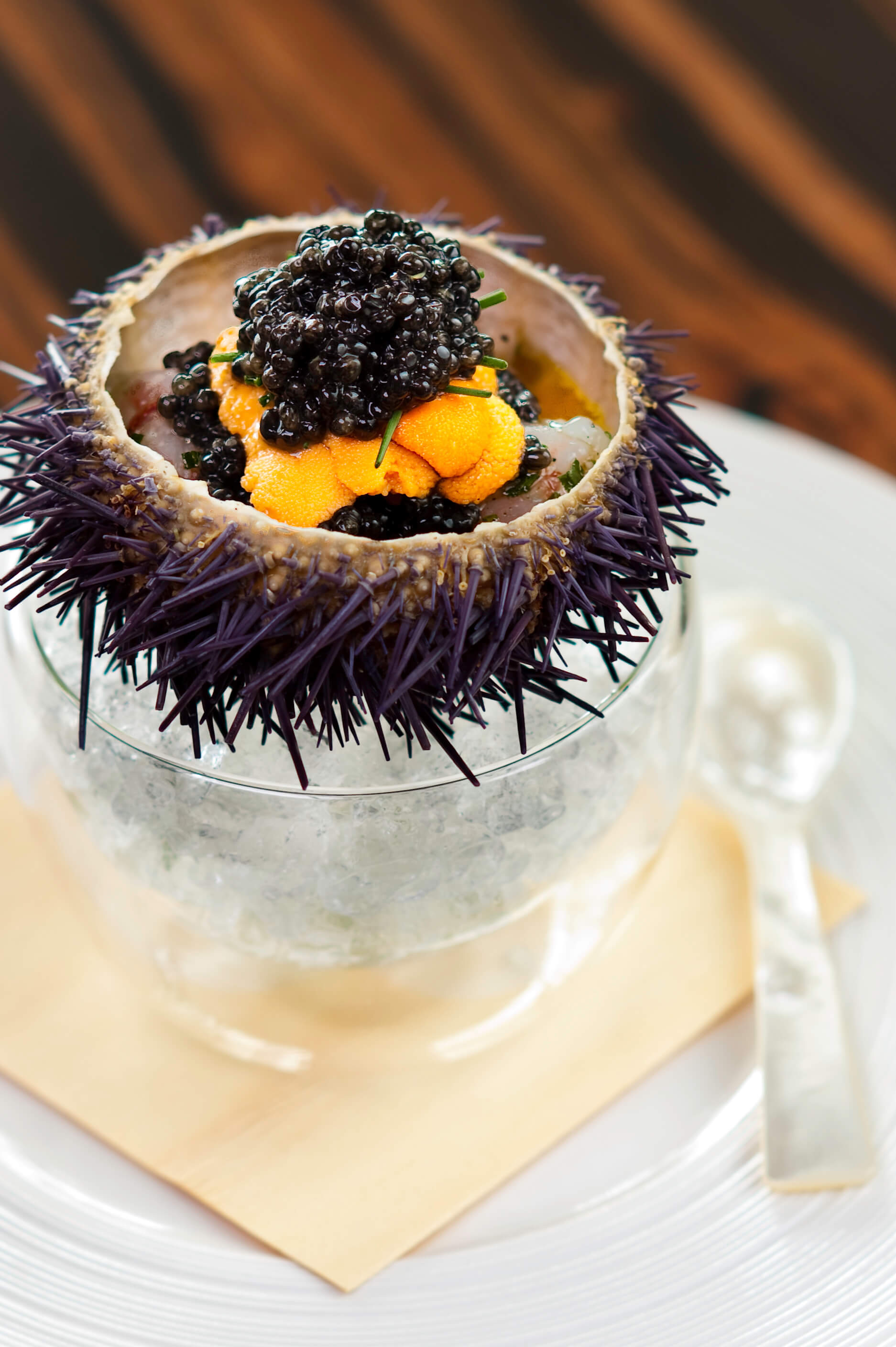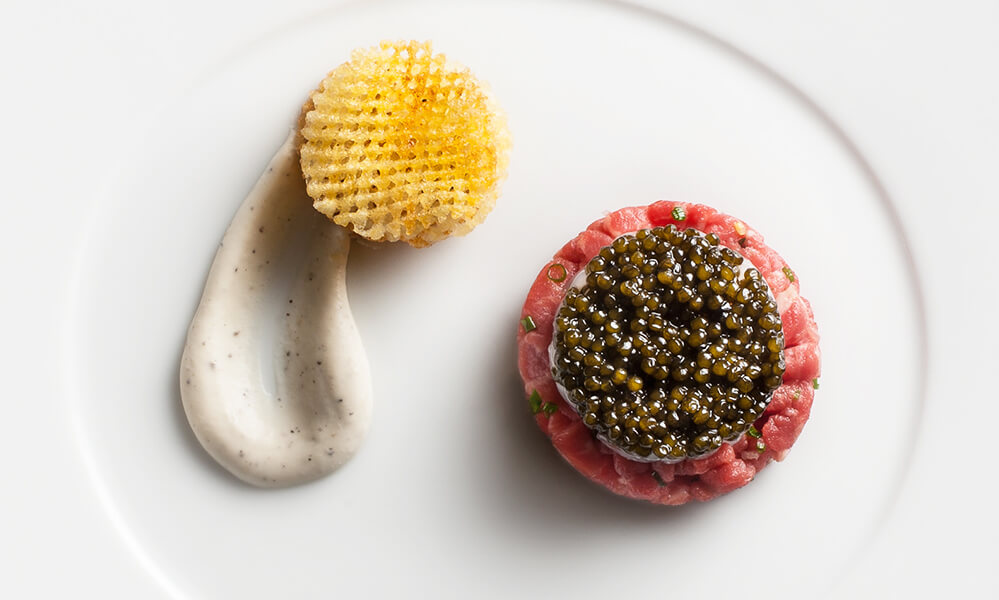Best Caviar in the World
With so many species of caviar out there, it can be challenging to decide which one is the best. However, examining the natural habitat of sturgeon (being the Caspian Sea) can offer more insight into what’s available, and what is the best quality caviar in the world.
It is a well-known fact that Iranian caviar is the best out there, thanks to its incredible texture and angelic taste, but which of the types available are the top of the list?
If you are interested to learn more about the origins of what is the best caviar in the world? Here below we will examine the best three types available on the market. Considered the highest quality of luxurious caviar available, these three varieties below rank at the top of the hierarchy every time.
Iran’s stellar reputation for the production of exemplary caviar is world-renowned. Iran was, and still is, seen as the only Caspian state that was internationally certified as not driving its local sturgeon population to extinction – its Fisheries ensure that by stocking the sea with millions of baby sturgeon and keeping careful catch records, they will stabilize the sturgeon population in Caspian Sea waters.
Beluga caviar
Known as the most sought-after and expensive type available, Beluga caviar originates in the Caspian Sea and is also known as the Huso Huso sturgeon. Once a prominent and plentiful species in the Caspian Sea, this coveted fish has reduced in population in part due to over-farming; making caviar from the Beluga an even more desired resource. Iranian caviar from these extraordinary fish is widely considered the best in the world.
Growing up to 30 feet in length, and with each female capable of holding up to 100 pounds of roe at full size, there’s a reason the Beluga has been fished the way it has. With each female taking an incredible 18 years to mature, the process of producing caviar is long and requires patience, but ultimately is the most delicate, flavourful and enjoyable in the world as a result. Oceana offers more insight into these fascinating fish.
Osetra caviar
Smaller in size that the highly-coveted Beluga caviar, this one is made from the roe of the Persian Osetra sturgeon, a smaller and less endangered species of sturgeon that is native to the Caspian Sea. While this fish originates from the Caspian Sea, a lower quality Osetra caviar is farmed in less than ideal farms in Europe and Israel where short-term profitability is priority and not culinary achievement.
Osetra caviar has a smooth, almost buttery and nut-based intensity. This makes it the perfect choice for many caviar-lovers who enjoy a different taste to Beluga. Unlike pure Beluga caviar, there have been reports of this type coming from a variety of hybrid species in European farms. When buying Osetra Caviar from Caspian Monarque, you will only be eating pure Osetra. We don’t produce cost-efficient and substitute “hybrids“.
Sevruga caviar
An alternative to Osetra, this beautiful-looking caviar is also sourced from the Caspian Sea. It is similar in its taste profile to Osetra, and again is a less costly alternative to the rare and luxurious Beluga caviar. Sevruga caviar, along with Osetra, is a luxury product in its own right. With only eight years required to produce the roe for caviar, these fish are most suited of the three to sustainable farming.
This type is also more readily available in comparison to the rare and coveted Beluga caviar, which offer superior taste and texture in comparison. Both Sevruga and Osetra are an ideal choice for those who enjoy caviar regularly, while Iranian Beluga provides the ultimate luxurious experience that’s once in a lifetime.
| “When you’re tasting wild Iranian caviar at its best, it’s something unbelievable: 3 star Michelin chef Eric Ripert.”It’s the best in the world,” said Rod Mitchell, owner of Browne Trading Co. “It’s known by connoisseurs as the finest caviar you can purchase…Mitchell said Iranian caviar is superior because of a ridge that runs down the middle of the Caspian Sea. The Iranian side is deeper, colder and purer, giving rise to a different type of fish than that found in the north: The Associated Press. Bangor Daily News ; Bangor, Me. [Bangor, Me]23 May 2000: 1.
“The Iranian have the better quality controls because their political system is more stable. Also, the sturgeons in the south of the Caspian Sea are larger and not subject to overfishing”: Gordon Ramsay |
Choosing high quality caviar
Are you wondering how to choose high-quality product that delights your taste buds? When you buy caviar online, you need to be aware of the many factors go into producing the world’s most exceptional caviar; from the sturgeon used for the production of the product, to how it is farmed, the quality of the waters it lives in, the food it eats all prior to the roe process. As with many animal-based products, it’s not a surprise that the closest legal caviar to wild one, is from special farms closest to the natural habitat of their origins. Attempting to bypass or hoodwink Mother Nature is simply not possible.
Farm-raising fish for fresh caviar just doesn’t have the same results when the waters and foods used are not from the ecosphere where it naturally grows. It has a major impact on the taste and nutritional quality of the caviar. The Caspian Sea is considered the perfect environment for the world’s most exceptional, flavourful and resplendent caviar, thanks to this unique, distinct location. While sturgeon caviar is the top rated out there, other types, such as salmon roe, are considered world-class also.
At Caspian Monarque, this quality is twofold. Both through the use of Beluga caviar, which is considered the best in the world, and because of the way it is produced. Working with sustainable, wild-bred Beluga ensures that all caviar that Caspian Monarque produces is of the uppermost quality possible. This is reflected in the stunning texture, and transcendent taste, that other brands just can’t match
Where does the best caviar in the world come from?
1. Make sure to check BOTH the back and the front of the caviar tin
It’s very important to make sure that you look over the entire tin and check the back closely, as well as the front. That’s because you’ll also want to examine the CITES label, which resembles this:
The front of the caviar tin has been designed to catch your attention. But that’s about all that is does. It doesn’t say much about the caviar – and that’s important to know. Since caviar quality has a wide range that you’ll want to verify prior to purchasing.
The CITES label is extremely important, since it represents a standard that is strictly enforced worldwide.
To begin with, the CITES label will let you know from which country the caviar originated from. For example; “RU” or “IR”, then the caviar originates from the Caspian Sea (“RU’ standing for Russia and “IR” standing for Iran). These two indications will tell you that the caviar represents the highest quality/grade. Always rely on what the CITES label says. When you purchase caviar online, you’ll want to make sure that a photo of the CITES label on the back of the caviar tin is represented and that the photo is easily readable.
If you see something different in the Source Code, you won’t be purchasing the highest grade caviar that you are expecting.
2. Be wary of phases such as; “Iranian Tradition”, “Iranian Method” , “Russian Tradition”, “Russian Method” and “Persian Method”. These phrases do NOT indicate caviar from Iran or Russia
It’s easy to find various tins of caviar in which the caviar tin front shows the phrases mentioned above. In no way does this indicate that the caviar originated from the Caspian Sea. It will still be caviar, but it can originate from; Germany, Spain, France, China and will be farmed well outside the sturgeons natural habitat.
Basically, “tradition” or “method” doesn’t indicate the caviar’s “origin” or “location”. This is why you want to carefully check the CITES label on the back of the caviar tin. If you buying almas caviar, this is even more important.
3. Like any good resort, “Location Matters” “Species” also matters
When you consider the clean waters of the southern Caspian Sea, you think of the Sturgeon that have existed there for literally tens of millions of years. They swam those waters when the dinosaurs ruled our planet and have remained virtually the same over the eons. Unfortunately, due to a lengthy breeding cycle, the Sturgeon have become endangered. (Note: a Sturgeon requires 20 years to reach the age when they can breed). Because of this, world governments have enacted laws that protect the Sevruga, Osetra and Beluga varieties. They have put into place serious penalties for violating their protected species laws.
Because of this, it’s not allowed to fish for caviar producing species in open waters. Therefore, all the caviar that is now consumed must be farm-raised. But, only in Iran can you find the farms that actually contain the Caspian Sea waters. Caspian Sea waters contain the phytoplankton that the fish require for their diet. Transplant efforts have been attempted – but all have failed. Man doesn’t yet have the ability to duplicate Mother Nature!
Consider, for example, farmers from France can remove the fish from the waters of the Caspian Sea, but they can’t properly transplant them to France. It goes against both ethics and the laws of sustainability. In addition, French factory farms can never duplicate the expertise and knowledge of raising authentic Beluga caviar. It can’t even be done with our current “high technology”. You just can’t duplicate what Mother Nature has taken millions of years in order to perfect. However, they keep on trying (and, of course, failing) and are willing to pass on their failure to the consumer (you).
It takes a very long time to even initiate Sturgeon farming. That necessary 20 years cannot be shortened and technology cannot overcome this. If you want to learn more about what is caviar and where caviar comes from you can read these two articles.
The Source Codes of the Most Expensive Caviar
Don’t be fooled by all of the different names on the tins. Here are the species codes to look for. If they don’t appear on the tins, you just aren’t getting the best caviar on the market today.
| Common name(s) | Species | Native Habitat | Species Code |
| Beluga | Huso Huso | Caspian Sea | HUS |
| Osetra | Acipenser gueldenstaedti | Caspian Sea | GUE |
| Sevruga | Acipenser stellatus | Caspian Sea | STE |
| Persian Osetra | Acipenser persicus | Caspian Sea | PER |
4. Pure caviar vs. hybrid
If you check the “Lot” number, you can even find out the actual Sturgeon from which the caviar was harvested. This will allow you to purchase multiple tins from a particular fish. If you desire, you may even obtain a DNA report by sending a caviar sample to a testing facility. This way, you can compare the results with those that are permanently on file with CITES officials and scientists.
This means that each tin of caviar can be located on the CITES database. So you can be assured that every tin is completely unique. There can be 100 tins of caviar from each individual fish. Because of this exacting system, you can determine, from the CITES code, whether the tin is from just one fish or if it’s a hybrid tin.
5. The complex processing of caviar at its source
The technique of processing caviar in order to bring out its wonderful flavor has a history ranging back tens of centuries. It is closely linked with Persia’s history and its Caspian Sea shores.
As time has passed; kingdoms, czars, moguls and empires have existed and disappeared and each one of them has enjoyed caviar’s unique flavor from this region. This flavor resides in the caviar that we offer.
More than a passing fad or some minor delicacy, caviar is fused with great nutritional value. The recipe for caviar processing in the Caspian Sea region has been handed down traditionally from one family’s generation to the next. These families have lived and worked in this region for centuries.
Of course, the exact methods of processing have been kept secret. However, the processing is performed under scientific scrutiny. This ensures that future generations will enjoy the exact same, rich flavor in the centuries to come. Needless to say, foreign producers have no access to these highly-guarded secrets. Only specifically designated individuals possess the understanding of our Caspian Sea caviar processing. These respected individuals can only consist of Iranians who are immensely proud of their country and heritage!
6. Pasteurizing
Just as you would do with any perishable food, you will want to check the “Best Consumed By” date. You will generally find this on the tin, where you’ll find the Lot Number.
It’s also important to note that most of the caviar that comes from European caviar farms will contain extra salt. This is due to the fact that their caviar just can’t match the quality of genuine Caspian Sea caviar.
Just take a moment and ask yourself – would you really want to purchase a delicacy like caviar without any indication of when the caviar was harvested, when it was packaged and when it is ready to expire? If you want to learn more about the technical language used please read here.
| Sturgeon Caviar Grading | |||||
| Quality Index | Evaluation Method | Highest Grade | Grade No.1 | Grade No.2 | Pasteurized² |
| Caviar origin & fish specie | Natural waters of Caspian Sea, CITES Label’ Quality certificates, Time-termperature history | Beluga, Osetra & Sevruga farmed using natural Caspian Sea Waters. Iran and Russia are the only two producers doing so. | Beluga, Osetra & Sevruga all other sturgeon species farmed using natural Caspian Sea Waters. Iran and Russia are the only two producers doing so. | Pasteurization is often not mentioned on the label. Species not intermixed | |
| Species not intermixed | Species may be intermixed | ||||
| Color | Visual, under standardized light condition | Homogeneous color. Beluga: light gray. Oscietre: slight yellowish or brownish shades in a basic gray-black hue. Beluga-white-gray and Oscietre- goldish shades are rarities | Homogeneous color. Light gray,dark gray, black, yellowish, brownish, greenish | Any color. Color mixtures acceptable | Any color. Slight color mixtures acceptable. Color may be paler than non-pasteurized |
| Appearance | Visual, over a candling table | Eggs round or slightly elongated, firm, elastic, easily separated, no broken eggs or residual tissue; reasonable moist and rotating inside a jar at room temperature | Eggs round or elongated but slightly weak; some presence of residual tissue; moist or dry & hardly rotating inside a jar at room temperature | Eggs weak and stick together in lumps; when separated eggs may burst; excessive juices released on container bottom or excessive dryness. Considerable number of burst eggs and membranes. Over-dried eggs | Eggs firmer than non pasteurized eggs, easy to separate; presence of lumps and some juice acceptable |
Sturgeon and salmon roe are not very susceptible to efforts to redefine good flavor and texture because the perception of what constitutes good taste in these products is well established, see the tables below.
| Quality Index | Evaluation Method | Highest Grade³ | Grade No.1 | Grade No.2 | Pasteurized² |
| Egg Size³ | Line up eggs over a 10 cm ruler and measure | All eggs of one size, either large or medium | Eggs of any single size | Eggs size and mixture and acceptable | Eggs of any single size |
| Odor | Organoleptic, at room temperature | Typical for sturgeon, sweet & fresh; off-odors not acceptable | Weak typical sturgeon odor, no off-doors acceptable | Slight, sharp, sour, yeasty, stable off-odor acceptable | Typical for pasteurized sturgeon. Phenol odor |
| Offensive odors not acceptable | |||||
| Taste & Consistency | Organoleptic multiple tasting of small portions at chilled temperature | Typical for sturgeon yolky, delicate, grassy acceptable, rich and lasting. Egg membranes melt leaving a pleasant viscous liquid impression | Typical for sturgeon some loss of yolkiness& richness; grassy but not muddy or other non-offensive after-taste acceptable. Individual egg membranes are slightly recognizable. | Some sharpness; grassy or muddy after-taste acceptable. Slight bitter or sharp & sour aftertaste acceptable. Weak sturgeon flavour, not offensive, interfering flavours. Over-dried, recognizable dryness and total loss of the membrane melting phenomenon | Typical for pasteurized caviar. Mild, modified yolky a pleasant flavour; egg membrane is tougher than for non-pasteurized caviar, slight chewiness acceptable |
| Salinity⁴ % by weight | Any instrumental method | 2.5 to 3.5 | 3.3 to 4.5 | 3.3 to 5.0 | 2.5 to 4.0 |
| Notes for the table above |
| 1The generic term ‘sturgeon caviar’ is used for all sturgeon fish species. The word ‘malosol’ means in Russian ‘low salted”. Low salinity is usually synonymous with high quality but the word is often misused and in fact is only a marketing gimmick. The word ‘fresh’ should mean non-pasteurized. |
| 2 In principle, pasteurized caviar can be made from all listed grades, if the roe is fresh. Pasteurized caviars are not graded further and constitute a separate grade. |
| 3 Elongated sturgeon eggs are lined up along the larger axis. Large eggs are 3 mm and over, medium 2.5 to 3 mm and small eggs less than 2.5 mm. Salmon eggs: large eggs over 4 mm, medium 3 to 4 mm, small eggs less than 3 mm. |
| 4 According to Iranian standards, caviars with saltiness less than 2.0% are processed only on special orders. Low salted highest grade non pasteurized caviar is processed only on special orders. |
